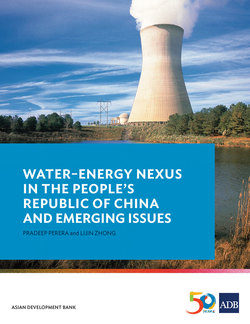Читать книгу Water–Energy Nexus in the People's Republic of China and Emerging Issues - Lijin Zhong - Страница 5
На сайте Литреса книга снята с продажи.
Foreword
ОглавлениеPromoting sustainable and inclusive growth is at the forefront of the assistance program of the Asian Development Bank (ADB) to the People’s Republic of China (PRC). With the expansion of the PRC’s economy by several folds since 1980, the increasing demand for water and energy is posing significant strains on the fragile ecosystems. At the same time, the sustainability of the PRC’s economic growth model and its achievements in poverty reduction and improving the quality of life of its citizens are being threatened due to the challenges associated with meeting the increasing demand for water and energy in a sustainable and coordinated manner.
The PRC has made significant improvement in reducing the water and energy intensity in its economy, and made a commitment to peak the carbon dioxide emissions by 2030 and to cap the water consumption at 700 billion cubic meters. As the PRC’s energy sector has a high degree of dependency on carbon-intensive coal, peaking carbon dioxide emissions require significant structural transformation of its energy sector towards low-carbon sources and further improvement in energy efficiency. The government of the PRC is taking measures to further improve water use efficiency in agriculture, promote recycling of water and expand the coverage of wastewater treatment, and transfer water from water-rich southern region to arid northern region. However, the choices made in either the water or energy sector will have significant impact on the other sector with either positive or negative implications. Hence, it is imperative to have a thorough understanding of the trade-offs between water and energy, which is referred to as the water–energy nexus.
ADB is at the forefront of supporting the government in shifting its economic growth trajectory to a more sustainable and climate-friendly path. ADB has provided inputs to the government in formulating the 13th Five-Year Plan in several thematic areas including climate change mitigation and adaptation as well as enhancing water and energy security. In this regard, a clear understanding of water–energy nexus in the context of the PRC is critical to formulate ADB’s strategies in water and energy sectors as well as to provide knowledge solutions to the government to address the water energy issues.
The “Water–Energy Nexus in the People’s Republic of China and Emerging Issues” provides a comprehensive analysis of the water use in the energy sector in the context of significant geographical imbalances of water availability and the implications of some of the emerging energy technologies such as shale gas development and coal gasification on water availability to other water users. Although the energy consumption for water supply is not significant in the context of the overall energy consumption in the PRC, the publication also analyzes the incremental energy demand due to recent initiatives to meet water demand using energy-intensive technologies, such as desalination and long-distance water transfers.
This publication will enhance ADB’s contribution to deepen the understanding of developmental challenges faced by the PRC in water and energy sectors and the interlinkages between the two sectors. It will help both the policy makers and development partners of the PRC to design more sustainable solutions and investment projects underpinned by the thorough understanding of interplay between water and energy.
Ayumi Konishi
Director General
East Asia Department
